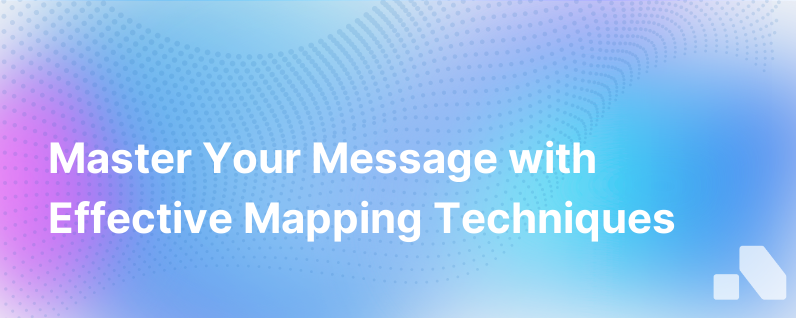Message Map
Published on November 21, 2023 by David Zhang
In the world of business, conveying your brand's core messages to your target audience is a critical task. It involves developing a clear, engaging narrative that can resonate with potential clients. One effective tool for achieving this is a message map. In this guide, we go in-depth on the function, creation, and application of this indispensable marketing tool.
What is a Message Map?
At its core, a message map is a structured visual aid that helps you distill your brand's key messages into simple, clear, and concise statements that the target audience easily understands. It allows you to effectively communicate your brand's value proposition, making it easier to engage customers and other stakeholders.
Not merely a script for sales pitches, a message map serves as an essential guide for all your communication efforts, ensuring consistency across multiple channels, from online advertising to face-to-face meetings.
Why a Message Map Matters
A well-crafted message map aligns your team on a unified brand narrative, ensuring consistent communication. It enables you to capture your audience's attention, convey your core value proposition, and differentiate your brand in a market saturated with competing messages.
Additionally, a message map forms a solid basis for all your communication needs, from internal documents and speeches, to marketing materials and social media posts. With a clear message map, you maintain consistency, improve comprehension, and increase message retention, thus building a stronger and more recognizable brand.
Key Elements of a Message Map
A message map typically includes the following elements:
-
Key Message (or Home Base Message): This is a summary of your core value proposition, the heart of your story or message. It should be short, clear, and impactful, summarizing your brand's primary benefit.
-
Supporting Messages: These are the pillars that back your key message. They elaborate on the benefits, offerings, or differentiators mentioned in your home base message, providing more detailed context.
-
Proof Points/Evidence: Each supporting message is further backed by proof points or evidence. These can be data, facts, figures, testimonials, case studies, or anything else that substantiates your claims.
-
Tailoring: You should adjust your messages to suit different audience segments. For example, a technical buyer might need more in-depth information, while a financial buyer is likely more interested in cost and ROI.
Crafting a Compelling Message Map
Creating a message map involves these steps:
1. Define your Key Message: Start with the heart of your story — your central theme or value proposition. Ask yourself, "What's the one thing I want my audience to remember about my brand?"
2. Identify Supporting Messages: Next, identify three or four key benefits, features or differentiators that support your key message. These reinforce the core idea and help expand on your main theme.
3. Provide Proof Points: For each supporting message, think of evidence that can validate your claims. Data, testimonials, case studies and awards all work well here.
4. Tailor Messages to the Audience: Finally, consider how your message might need to be tailored for unique audience segments. What are their unique interests and priorities? How can you customize your narrative for each of them?
Applying the Message Map
Inventory all the communication touchpoints with your audience, including website content, social media updates, ad campaigns, customer service interactions, email marketing and sales presentations. Utilize your message map in crafting all these messages to ensure a coherent and consistent narrative across all channels.
Incorporate your messages in all phases of your customer's journey, from awareness and consideration to the decision-making stage, to ensure that your audience obtains a consistent, reinforcing narrative of your brand's value.
Conclusion
A message map is a critical coordination tool that ensures consistent messaging across your organization. It enables everyone in your team, from sales, marketing, to customer service, to deliver a clear and concise representation of your brand.
Creating an effective message map might seem like a daunting task, but once in place, it empowers your team to convey the essence of your brand. Your clients will more easily understand the benefits you offer, which increases the chances of converting them into loyal customers.
Consider letting an AI like Aomni help with this process. Aomni can guide you through creating your message map, ensuring that it's succinct, yet covers all necessary aspects of your strategy. This way, you can spend more time engaging your target audience and less time worrying about how to communicate with them.